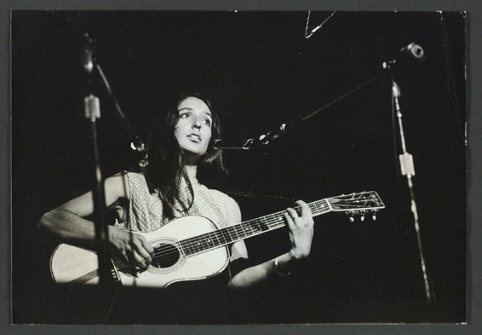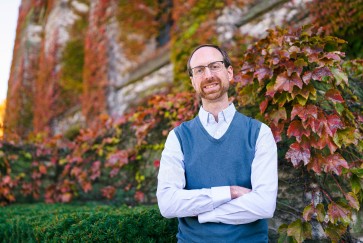Northwestern University Libraries is inviting anyone with an appreciation for music history or interest in counterculture and the social movements of the “Long 60s” to take a trip back in time to the Berkeley Folk Music Festival through a recently launched digital exhibit.
While showcasing folk legends Joan Baez, Pete Seeger and Howlin’ Wolf, the exhibit explores the understudied significance of California and the West Coast in the larger story of the American folk music revival. It also shows how materials in the Berkeley Folk Music Festival Archive raise important questions about race, class, gender, region, higher education, public space, cultural heritage and the practice of American democracy during the decades after World War II.
The Berkeley Folk Music Festival took place on the campus of University of California between 1958 and 1970. The digitization of the festival archive, a massive undertaking enabled by a 2017 grant from the National Endowment for the Humanities, includes 33,500 photos, posters and other materials in a new, searchable digital repository.
While the repository is available for browsing by the public and research by scholars, the best way to explore the archive is by viewing a digital exhibition created by Michael J. Kramer, an assistant professor at the State University of New York, Brockport. Kramer has been working with the archive since 2009, when he was an adjunct professor at Northwestern.
Because the Berkeley Festival was happening on the West Coast in the 1960s, it had a different slant than the more traditional folk revival on the East Coast, Kramer said. The East Coast folk revival became best known perhaps for the vociferous objections to Bob Dylan “going electric” in 1965, which some saw as an abandonment of its purist, leftwing ideals.
“The West Coast folk revival at Berkeley was less concerned with these definitions of authenticity,” Kramer said. Instead, the participants focused more on the breadth of folk, from Black blues and Appalachian traditions to international sounds — such as United Kingdom ballads and Mexican-American conjunto ensembles — to newer genres such as rock and soul. As the 1960s progressed, the Berkeley Festival opened up its program of folk music to avant-garde experimentation, psychedelia and singer-songwriter poetry without giving up on its inclusive, communal atmosphere.
“At the Berkeley Festival, it’s a story in part of the American South being reimagined out West right during the height of the civil rights movement,” Kramer said. “The festival asserted that Americans on the margins of society, such as long forgotten or ignored working-class musicians from the hinterlands, had as much to offer as the faculty at a prestigious university.”
The exhibit includes numerous never-before-seen photographs, audio and video from festival events, related recordings by performers, an interactive timeline, Kramer’s historical essays on the festival’s significance, and a comprehensive bibliography for those looking to go deeper into the study of the folk revival in the context of postwar American history.


